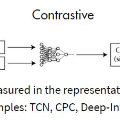Graph contrastive learning has gained significant progress recently. However, existing works have rarely explored non-aligned node-node contrasting. In this paper, we propose a novel graph contrastive learning method named RoSA that focuses on utilizing non-aligned augmented views for node-level representation learning. First, we leverage the earth mover's distance to model the minimum effort to transform the distribution of one view to the other as our contrastive objective, which does not require alignment between views. Then we introduce adversarial training as an auxiliary method to increase sampling diversity and enhance the robustness of our model. Experimental results show that RoSA outperforms a series of graph contrastive learning frameworks on homophilous, non-homophilous and dynamic graphs, which validates the effectiveness of our work. To the best of our awareness, RoSA is the first work focuses on the non-aligned node-node graph contrastive learning problem. Our codes are available at: \href{https://github.com/ZhuYun97/RoSA}{\texttt{https://github.com/ZhuYun97/RoSA}}
翻译:对比图学习最近取得了显著的进展。 但是, 现有的作品很少探索不结盟节点- 节点对比对比。 在本文中, 我们提出一个名为 RoSA 的新颖的对比图学习方法, 重点是利用不结盟的增强观点进行节点代表性学习。 首先, 我们利用地球移动器的距离来模拟最小努力, 将一个观点的分布作为我们的对比图对比目标, 这不需要对各种观点进行对比。 然后我们引入对抗性培训作为辅助方法, 以增加抽样多样性和增强我们模型的稳健性。 实验结果显示, RoSA 超越了一系列关于同性、 非混合和动态图形的图形对比学习框架, 这证实了我们工作的有效性。 为了提高我们的认识, RoSA 是第一个侧重于不结盟节点- node 图形对比学习问题的工作。 我们的代码可以在以下查阅:\href{https://github.com/ ZhuY97/SA/ Rosa/ texttt{https://github.com/ ZhuYun97/ SA=



